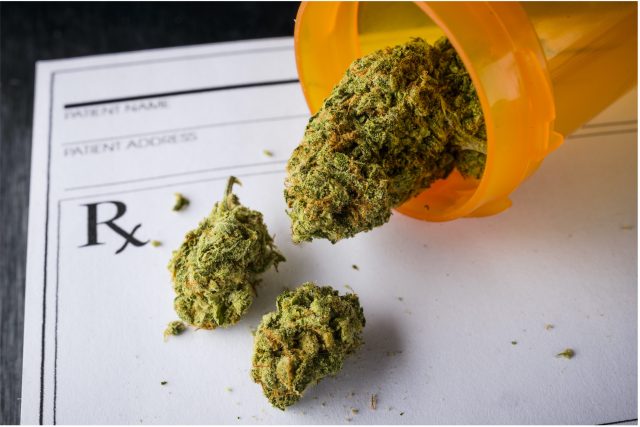Since the 19th century, the United States government and its medical community have fought over the legal and medical status of marijuana. Although cannabis’s uses in natural medicine can be traced back as early as 3000 BC, in recent history, propaganda surrounding marijuana has largely turned public opinion and led to a federal ban on recreational and medical marijuana for many years well. Daniel Fung, Watertown, CT, resident, and medical marijuana supporter, believes that the United States has come a long way in terms of recognizing marijuana’s medical potential and is proud that thirty-six of our fifty states have legalized marijuana use for individuals diagnosed with various illnesses and conditions. Although there are many states that still do not offer patients access to medical marijuana, Daniel Fung hopes to highlight just how far our country has come since marijuana was first vilified in the mid-1850s.
Before the 1800s, marijuana was widely unknown by the majority of United States citizens and was used recreationally by only a small fraction of the population. However, in 1842, marijuana was thrust into the public eye when Sir William B. O’Shaughnessy, a famous physician, traveled to India and began studying the medical abilities of cannabis. When he returned to the United States, he published his findings and recommended that the plant be used for pain management and chronic nausea. During this time, O’Shaughnessy became known as a champion of cannabis and pushed for the plant to be added to the United States Pharmacopeia. Cannabis was added and was listed within the medical publication under “Extractum Cannabis” and was listed as a treatment for over 100 medical conditions, including gout, insanity, rabies, tetanus, cholera, and opiate addiction. As a result, alcohol-based tinctures that were mixed with Indica cannabis became a mainstream medication within the US.
While cannabis was not widely popular until the mid-1800s, it had been well established in Mexico and Native American populations for many years. When Mexican American immigrants and Mexican soldiers began traveling to the United States in earnest in the mid-1800s, they carried with them the first recordings of “marijuana cigarettes.” Daniel Fung of Watertown, CT states that when word of these cigarettes reached American businessman and newspaper typhoon William Randolph Hearst, the debate over the dangers of marijuana would truly begin in earnest. As Heart believed his business could potentially go under if hemp products became mainstream and replaced paper, Hearst would become the first developer of widespread cannabis propaganda and publish a number of articles demonizing marijuana, spreading misinformation regarding cannabis and hemp products.
When Sir William Osler, a prominent physician and one of the founders of Johns Hopkins University, published his 1892 textbook, The Principles, and Practice of Medicine, it became one of the leading medical texts in the Western World. However, within the textbook, Sir William Osler wrote that cannabis was “a most satisfactory remedy” for migraines which sparked a large number of physicians and pharmacists throughout the United States and Canada to recommend cannabis for several conditions; Hearst started once again in earnest a smear campaign against cannabis. With his government associates, Heart utilized his press connections yellow journalism tactics (lurid features and fear-based headlines) and helped pass the first marijuana prohibition law, which targeted solely Mexican immigrants in Brownsville, Texas.
At the turn of the century, America saw a rise in drug and alcohol abuse. During this time, Heart’s newspaper published numerous articles that said the most violent drug-related incidents did not stem from cocaine or alcohol abuse but from black citizens smoking marijuana. Just sixteen years after the first marijuana prohibition law was passed, the Harrison Narcotics Tax Act (1914) followed, banning physicians and doctors from prescribing opiate-based drugs. By the 1930s, the United States’s Reefer Madness era had begun with the Federal Bureau of Narcotics releasing the infamous film in 1936s, vilifying Black jazz culture and painting the drug as a highly addictive and aggression-inducing substance. In 1937, the Commissioner of the Federal Bureau of Narcotics, Harry Anslingher, put the Marijuana Tax Act before congress, which would make the possession and sale of cannabis illegal in all 50 states. While the American Medical Association and numerous physicians would testify against the bill, when Anslinger read a newspaper article published by Heart before the courtroom, the bill was passed.
Thanks to Anslinger, for the next 30 years, American society worked under the assumption that cannabis was addictive and deadly and that many violent outbursts within society were caused by minorities and immigrants using illicit drugs. By 1970, President Richard Nixon had passed the Controlled Substance Act, which classified marijuana as a Schedule 1 narcotic, a category of drugs with no medical value that shows high potential for addiction and abuse. Some of the other drugs seen in the Schedule 1 category included heroin, LSD, ecstasy, and peyote. However, in 1976, the conversation of cannabis’s uses in medicine was raised once again when Robert Randall, a glaucoma patient, was arrested and charged with possession of marijuana. Randall brought his case to the US federal government and argued that his possession charges should be removed due to his condition. Robert Randall won his case and became the first legal medical marijuana patient since the Marijuana Tax Act of 1937. However, later that same year, the US government would ban the federal research of cannabis’s medical properties, ensuring marijuana kept its Schedule 1 placement.
Although Robert Randall’s case was groundbreaking in the fight for the legalization of medical marijuana, his case would remain an outlier for many years. When the Reagan administration took office in the 1980s, the president would take a firm stance on the War on Drugs, with Nancy Reagan leading the fight with “Just Say No.” Although during this time, the AIDS epidemic was at its apex, and many AIDS patients were advocating for medical marijuana use, their cases were rejected, forcing many to self-medicate through illicit means. With Reagan and later President Bush doubling down on drug-related crimes, from 1980-1997, the number of cannabis-related non-violent incarcerations rose drastically from 50,000 to over 400,000. However, as more AIDS patients continued to die from wasting syndrome, LGBTQ activities and groups in California lobbied for medical marijuana and found evidence of cannabis’s ability to stimulate appetites in those with HIV. In 1996, The Compassionate Use of Medical Marijuana Act, otherwise known as proposition 215, was enacted by popular vote and allowed doctors to prescribe cannabis to medical patients, marking a historic win for medical marijuana use and a breakthrough for the medical community.








